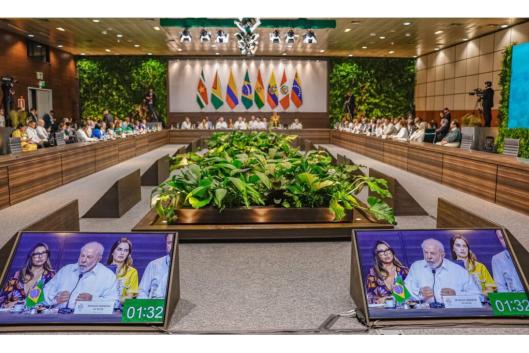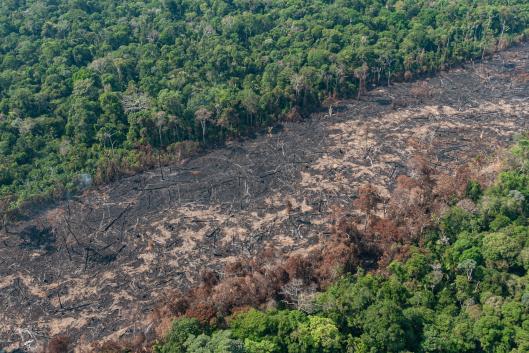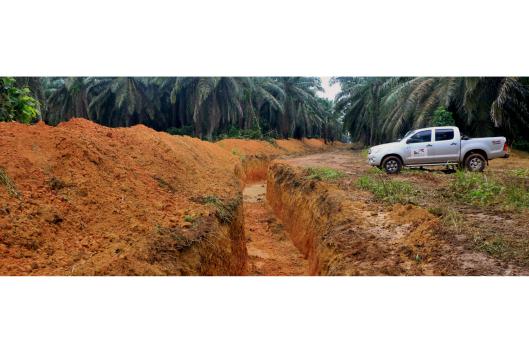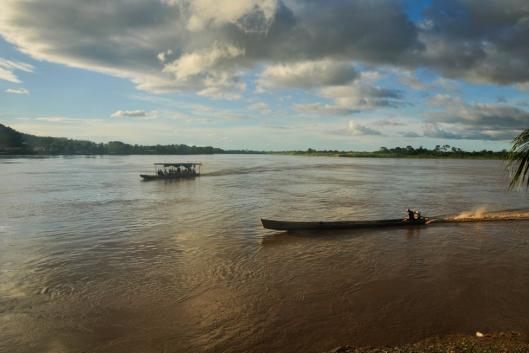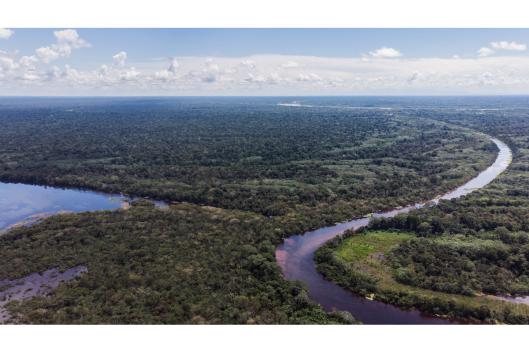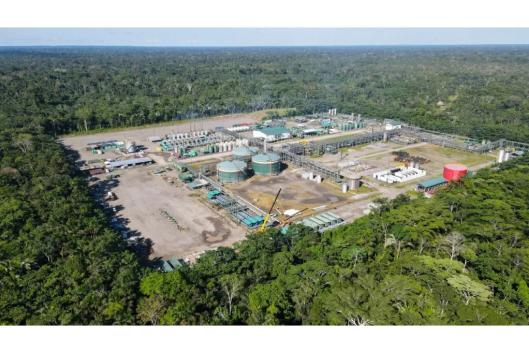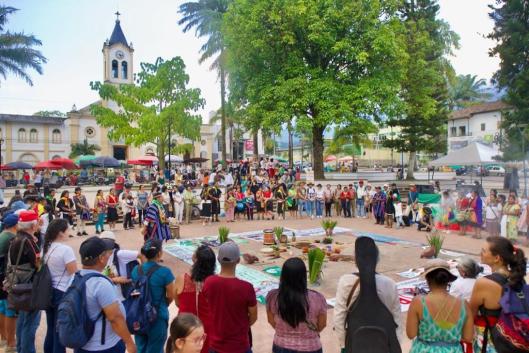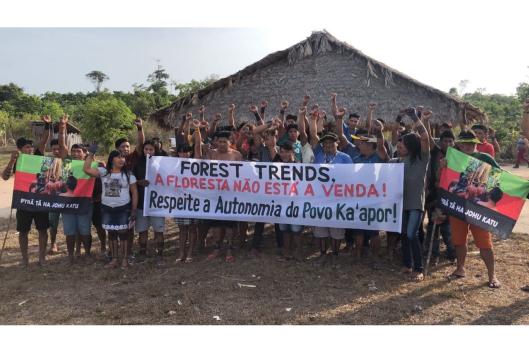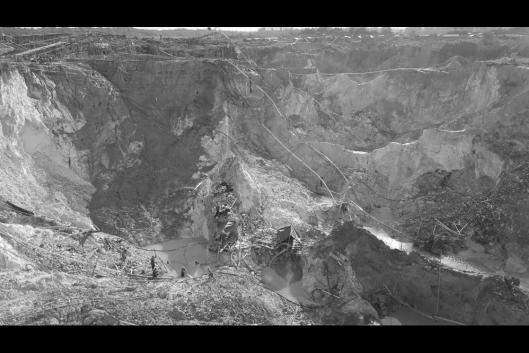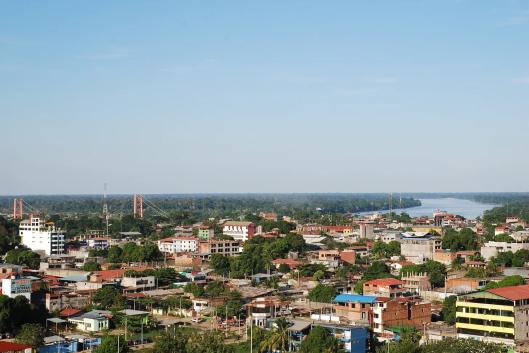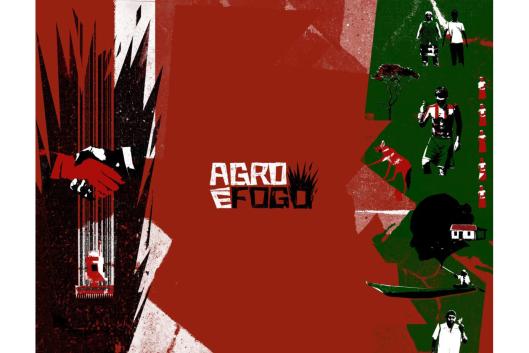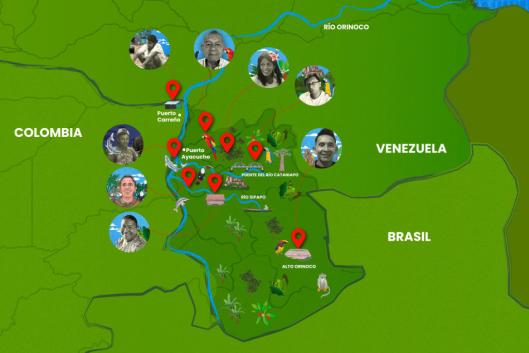Using the argument of “sustainable development”, governments in the Amazon region continue providing incentives for extractivism. In the face of this, indigenous leader Alessandra Munduruku vents her thoughts: “What we need is the demarcation of indigenous territories. Enough talk of bioeconomy, of sustainability, when there is violence in the here and now.”
Bulletin 269 - February 2024
The Amazon: Community struggles against old and new threats
WRM Bulletin
269
February 2024
OUR VIEWPOINT
THE AMAZON: COMMUNITY STRUGGLES AGAINST OLD AND NEW THREATS
-
27 February 2024The Amazon region is one of the final frontiers of resistance to capital expansion. This is epitomized by the struggles of social activists such as Chico Mendes, as well as by the presence of most of the earth’s remaining indigenous peoples in voluntary isolation. However, different forms of ‘green’ extractivism are currently and increasingly advancing on this territory.
-
26 February 2024In the Acará Valley, Pará state, the Tembé and Turiwara indigenous peoples, and quilombola and peasant communities are fighting to take back part of the living spaces they traditionally occupied. It is not just a struggle for territory, but one to reverse a history of oppression and injustice. Today, they are denouncing structural violence and state omission.
-
26 February 2024The expanding agricultural frontier to grow soybean and oil palm, in addition to mining and the potential construction of mega-dams, are advancing upon the living spaces of indigenous and peasant communities. In late 2018, communities organized a coordinating committee to defend their territories and their right to a dignified life.
-
26 February 2024Indigenous communities of the Peruvian Amazon Basin have created a network to defend their rights to territory and self-determination. Their struggle is not only against deforestation, but also against conservation and carbon market projects—such as REDD projects—that cause more injustice and internal conflicts.
-
26 February 2024The Ecuadorian people's decision to stop oil extraction in the Yasuní National Park now brings new challenges: How do you recover a territory that has been sacrificed, and bring justice to affected areas, with the solidarity of the whole country?
-
26 February 2024Mocoa is located between the Andean mountains and the Colombian Amazon, in the middle of one of the most important river basins of the country; in this territory, indigenous communities, Afro-Descendants, peasants and settlers coexist. The growing demand for minerals for the “decarbonization” of the world is a threat to this region, where mining companies are trying to move forward with underground copper extraction.
-
26 February 2024The Ka'apor live in Alto Turiaçu, in the northwestern part of Maranhão state in Brazil. It is the largest indigenous territory of the Eastern Amazon and the largest portion of preserved rainforest in the region. Foreign companies have arrived there to propose REDD projects; this has caused conflict, and part of the community is rejecting these projects and organizing to resist.
FROM THE WRM BULLETIN ARCHIVES
-
26 February 2024In recent years, one of the biggest threats to the Venezuelan Amazon and to the Indigenous Peoples who inhabit it has been mining, especially gold mining.
RECOMMENDED
-
26 February 2024The certifying company has turned a blind eye to the fact that the Peruvian government has not only not demarcated the indigenous territory but has also given the company two contracts for concessions.
-
26 February 2024The Brazilian Coalition Agro é Fogo is made up of social movements and organizations that have worked for decades to defend the Amazon, Cerrado, and Pantanal regions, and the rights of their Peoples and communities.
-
26 February 2024The production of audio-visual tools, videos and podcasts in the Amazon, where Indigenous Peoples talk about their realities and resistance struggles, is increasing.
